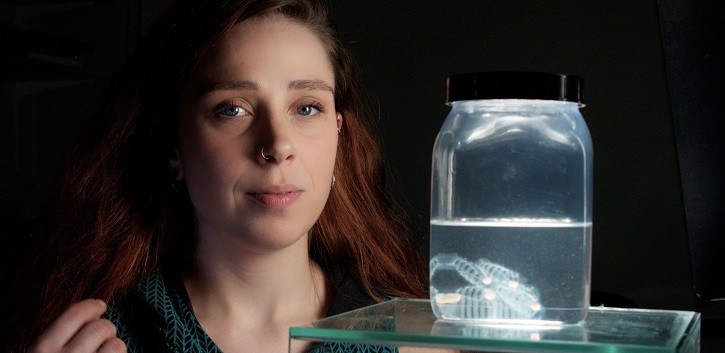Microplastic ingestion by zooplankton may alter amount of CO2 reaching sea floor

The uptake and long-term storage of atmospheric carbon dioxide in our oceans fuelled by key organisms may be negatively impacted by microplastics, a new study has found.
Led by marine scientists from the Ryan Institute at NUI Galway, in collaboration with UCC and Villefranche sur Mer Laboratory, the study found that microplastics may impact on important ecosystem processes which facilitate the uptake of carbon dioxide from our atmosphere.
The research, which has been published in the international peer-reviewed journal Environmental Science and Technology, examined how microplastics interact with marine animals called salps. These jellyfish-like animals play an important role in the uptake of carbon dioxide from the atmosphere and its downward transport to the sea floor where the carbon gets stored.
Plastic eaten by plankton may impair oceans’ ability to trap CO2 https://t.co/FPx3r2yiID
— The Irish Times (@IrishTimes) April 30, 2019
Dr Tom Doyle, senior author of the study from UCC, (formerly NUI Galway), said: “Our study highlights that marine litter and microplastics may impact on animals and even ecosystems in ways we just haven’t considered yet.
Microplastics in the ocean may prevent the storage of carbon dioxide on the seafloor and disrupt one of the Earth’s most important natural processes, an Irish study has found.https://t.co/gNaeGfP9j2 pic.twitter.com/Mf3IxsmxJt
— The Times IE (@thetimesIE) April 30, 2019
“However, it is important to point out that our study was carried out in a laboratory and under controlled conditions. We now need to go out into the field to further test our hypothesis by quantifying the abundance of microplastics found in salps and their faecal pellets in different areas of our oceans.”
Lead author of the study, Alina Wieczorek, Ryan Institute, National University of Ireland Galway, explained: “Our oceans are estimated to have captured one quarter to one half of all human-derived carbon dioxide from the atmosphere in the last two centuries and this downward transport of carbon by salps and other zooplankton animals accounts for a major portion of this.”
At the sea surface, microscopic algae turn dissolved CO2 into fuel (organic carbon). These algae are consumed by many different animals and form the basis of the marine food web. As this organic carbon is passed up through the food chain much of it is respired and converted back into CO2 which is then released into the ocean and the atmosphere.
However, some of the captured carbon is transported to the sea floor in the form of sinking particles. This is where salps play an important role. They ingest algae at the sea surface and produce dense faecal pellets, which rapidly sink to the deep sea, carrying with them some of this captured carbon.
The researchers found during laboratory experiments at the Villefranche Ocean Observatory that when salps ingest microplastics and incorporated them into their faecal pellets they did not sink as fast anymore.
The study was chiefly funded by the PLASTOX Project under the Marine Institute’s Marine Research Programme run by the Irish Government via framework of JPI Oceans.
@AlinaMWieczorek discusses her study in this short video which found microplastic ingestion by zooplankton may alter the amount of CO2 reaching the sea floor: https://t.co/Y7rZTxP25l @tomkdoyle @UCC_Official @biodev_vlfr @EnvSciTech
— NUIGalway Press (@NUIGalwayPress) April 29, 2019
Microplastic ingestion by zooplankton may alter amount of carbon dioxide reaching sea floor - study https://t.co/7DGNDAEqgA
— Microplastics Warriors (@MicroplasticW) April 30, 2019
Microplastics in faeces of jellyfish-like animals 'could affect CO2 in atmosphere' https://t.co/6p01Ce9Ql9
— news clips (@energytranmon) April 30, 2019
Microplastics in the world's oceans are contributing to global warming https://t.co/GohIYhZuUY
— Daily Mail Online (@MailOnline) April 30, 2019
